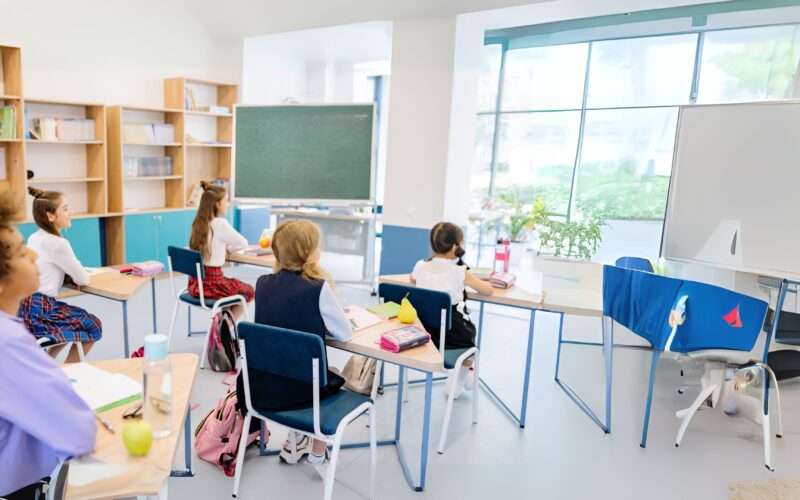Have you ever felt like your classroom is spiraling out of control? Struggled to get students to focus or engage? You’re not alone—and you’re not a bad teacher. In fact, many educators unknowingly make simple classroom management mistakes that can lead to disruption, disengagement, and stress—for both students and teachers.
Why Classroom Management Matters
Effective classroom management isn’t about control—it’s about creating a safe, predictable, and respectful space where students can learn, grow, and thrive. The way we manage classrooms has a direct impact on academic success, emotional wellbeing, and long-term motivation.
And SEL plays a key role in this. When students feel understood, respected, and connected, they’re more likely to stay engaged and less likely to act out. SEL helps students build skills like self-regulation, responsible decision-making, and empathy—all critical for maintaining a positive classroom culture.
Mistake 1: Not Setting Clear Expectations
One of the most common (and most fixable) classroom management issues is a lack of clear expectations. When students don’t know what’s expected of them—academically or behaviorally—they’re more likely to act out, push boundaries, or disengage.
What to do instead:
- Set classroom norms early. Involve students in creating classroom agreements so they take ownership.
- Be consistent. Reinforce expectations with clear language and predictable consequences.
- Use visuals. Posters and reminders help keep expectations top of mind.
- Model behavior. If you expect students to show respect, demonstrate that respect in how you interact with them.
Clear expectations don’t just help with behavior—they promote student safety, trust, and structure, all of which are essential to a classroom rooted in SEL.
Mistake 2: Inconsistent Consequences
When consequences for misbehavior are unpredictable or unevenly applied, students can become confused, resentful, or even defiant. This not only undermines classroom management but can also damage relationships and student confidence.
How to fix it:
- Apply rules fairly. All students should be held to the same standards.
- Use positive reinforcement. Praise good behavior just as consistently as you respond to negative behavior.
- Be transparent. Let students know what to expect and why certain behaviors lead to specific outcomes.
Consistency builds trust. And when students feel the classroom is fair, they’re more likely to buy in emotionally and behaviorally—a cornerstone of both SEL and student mental health.
Mistake 3: Ignoring Student Engagement
Boredom is one of the fastest ways to lose control of your classroom. If students aren’t engaged, they’ll find something else to focus on—and often, that leads to disruption.
Try this:
- Use active learning. Include group work, peer discussions, hands-on activities, or short student-led segments.
- Offer choice. Allowing students to choose their topics or how they demonstrate learning increases investment.
- Connect lessons to real life. Relevance keeps students curious and involved.
- Use tech wisely. Platforms like Kahoot, Flip, and Google Classroom can boost participation when used intentionally.
When students are emotionally and intellectually engaged, they’re more likely to stay focused—and more likely to feel connected to the learning process and each other.
Mistake 4: Skipping Structure and Planning
Even the most engaging teacher can lose a class, if lessons lack flow or direction. Without a clear plan, it’s easy for lessons to run off track, leaving students confused or restless.
What you can do:
- Set clear learning goals. Let students know what they’re learning and why.
- Use a predictable structure. Begin with a warm-up, teach new content, practice together, then reflect or summarize.
- Plan transitions. Students need to know what happens next so they don’t fill downtime with off-task behavior.
- Be flexible, not scattered. A great lesson plan leaves space for adjustment without losing its core structure.
A well-structured classroom gives students the stability they need to manage their emotions and focus—key SEL outcomes that support learning and mental health.
Mistake 5: Not Building Relationships
Classroom management isn’t just about routines—it’s about relationships. When students feel seen, heard, and valued, they are more likely to cooperate, engage, and take academic risks.
How to build those bonds:
- Greet students daily. A simple “hello” at the door can set the tone.
- Check in regularly. Use quick surveys, journals, or informal chats to gauge how students are feeling.
- Share about yourself. Building trust goes both ways.
- Respect student identities. Acknowledge and honor their backgrounds, experiences, and interests.
Strong relationships boost resilience, decrease behavioral issues, and improve overall wellbeing. These outcomes directly support both SEL development and student mental health.
Supporting Mental Health and SEL in the Classroom
Classroom management and SEL go hand in hand. When you teach with empathy, consistency, and intention, you’re not just reducing disruptions—you’re actively improving the emotional climate of your classroom.
Here’s how SEL supports better classroom management:
- Self-awareness: Students learn to recognize their emotions and how they affect behavior.
- Self-management: Students build skills like impulse control and emotional regulation.
- Social awareness: Empathy and perspective-taking reduce conflict and increase cooperation.
- Relationship skills: Students learn how to communicate clearly and resolve disagreements.
- Responsible decision-making: Better decisions mean fewer disruptions and more academic focus.
Final Thoughts: Reflect, Adjust, Grow
Every educator makes classroom management mistakes—it’s part of the learning process. What matters is how we respond. Take time to reflect on what’s working and where you might need a reset.
Whether it’s reinforcing expectations, building stronger connections, or integrating more SEL into your day, small changes can lead to big improvements. And when classrooms are built on trust, respect, and emotional safety, students don’t just behave better—they learn better.



